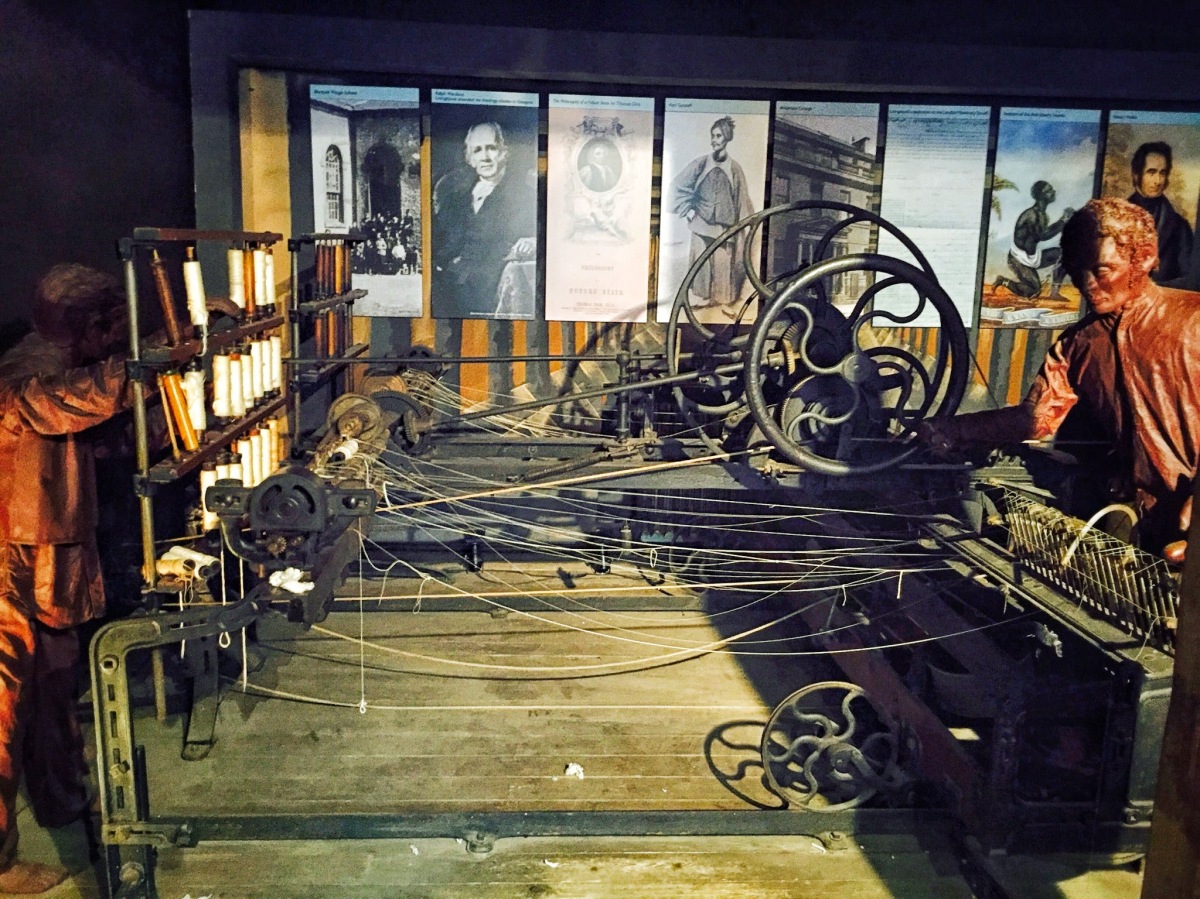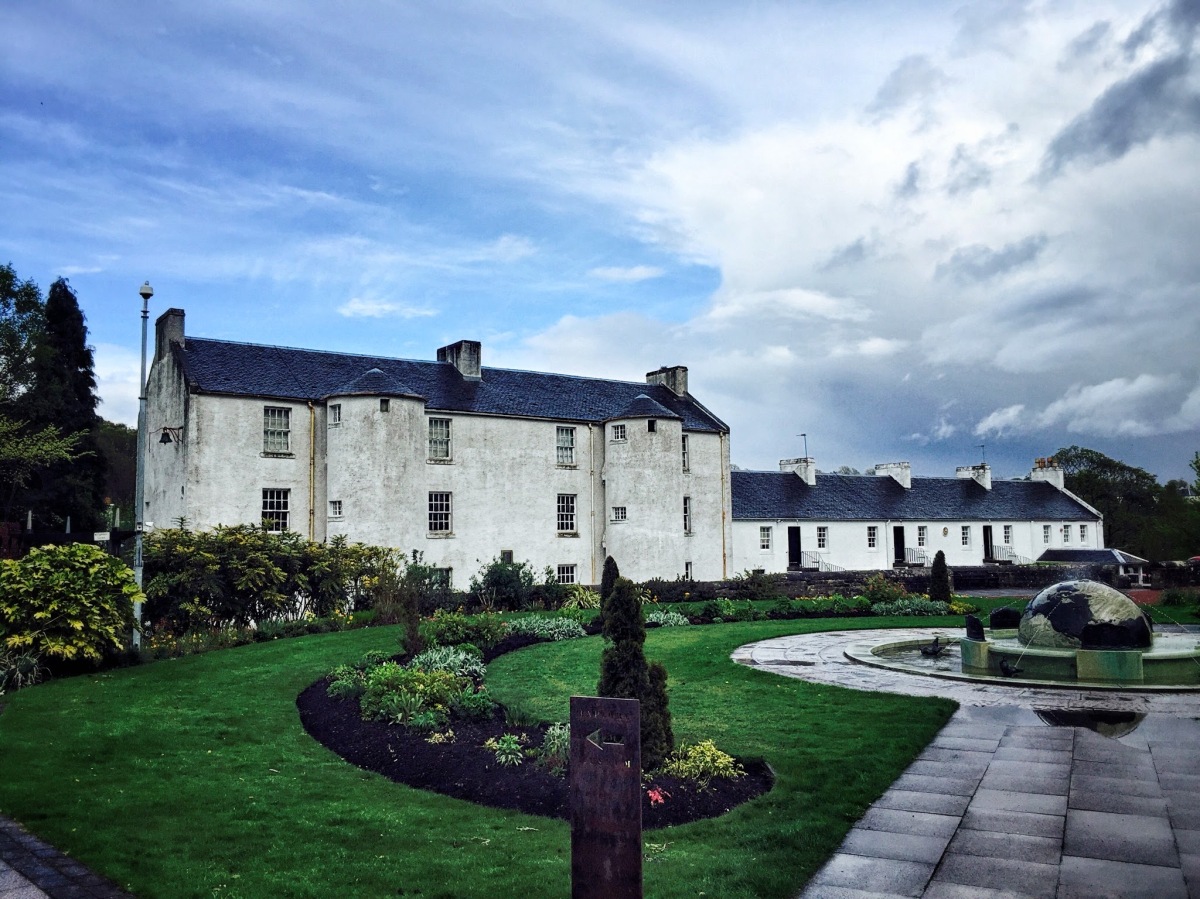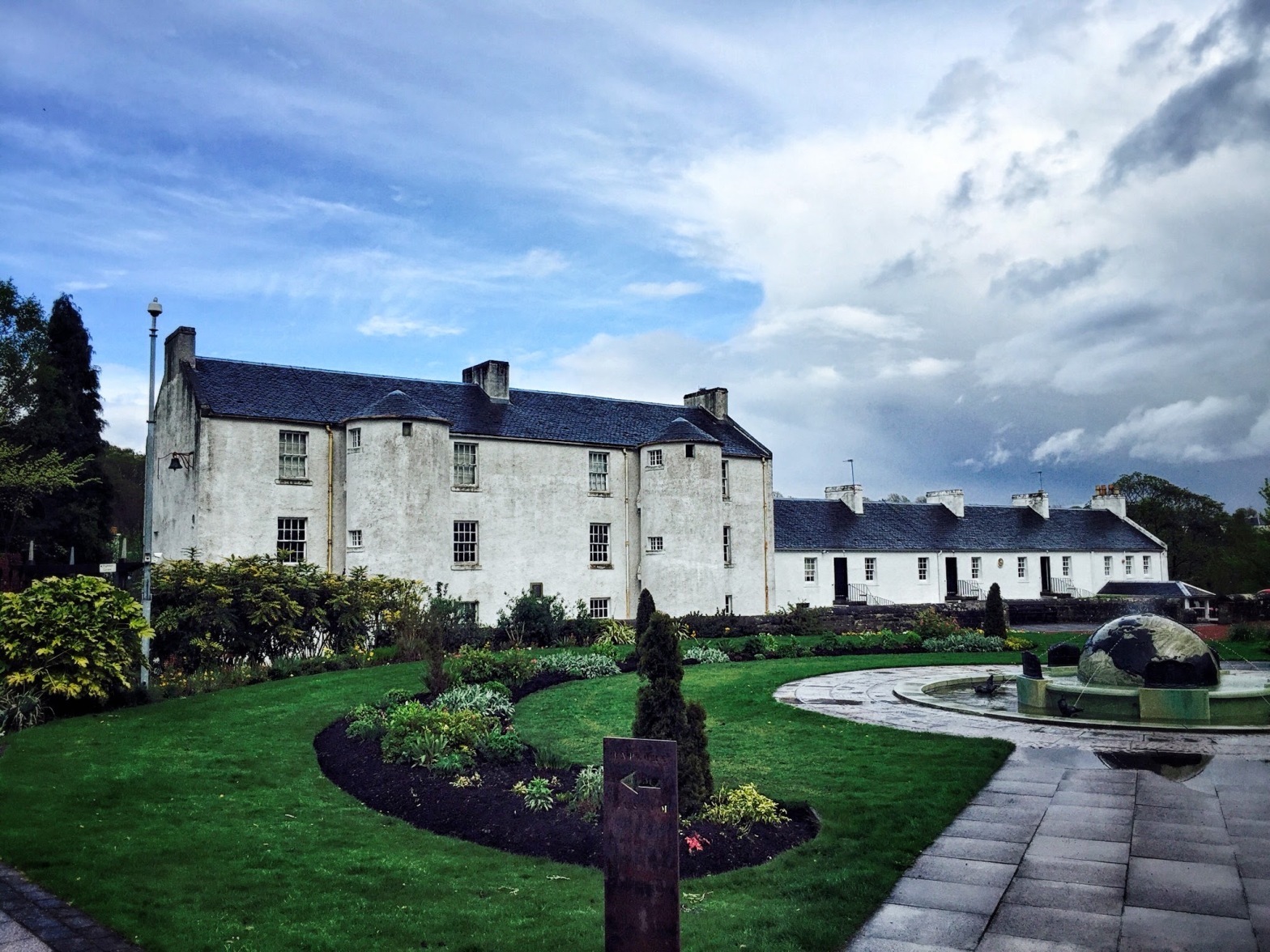
“I am prepared to go anywhere, provided it be forward.”
Dr. David Livingstone
Words hold power by generating an emotional response. For me, the word “resilience” has become one of my favourites; whenever it comes up in my readings and conversations, my thoughts become engaged on positive outcomes. Defined as the capacity to recover rapidly from difficult and complex situation, resilience helps us overcome adversity, adapt to loss, even embrace challenges. Resilience is acquired over a lifetime, and comes from being connected within a supportive and compassionate community. One of the factors that strengthens and builds resilience is helping others and looking for ways to better the world.

Children who worked in the cotton mills and coal mines suffered neglect and abuse; many died. But despite the grim circumstances, there was evidence of resilience and courage.
Dr. David Livingstone embodies the attributes of resilience. His birth was recorded on March 19, 1813, in the mill town of Blantyre, Scotland. His parents, Neil and Agnes Livingstone lived in a tenement building that housed cotton mill workers. At the age of 10, David entered the H. Monteith’s Blantyre cotton mill factory, working twelve-hour days as a “piecer.” His task was to tie broken cotton threads on large spinning machines called spinning mules. The breaks occurred frequently which required nimble fingers to repair the thread without any let-up on the machine.
David spent sixteen years in the Blantyre cotton mile to sustain his impoverished family. Even though he was promoted to the position of a spinner, the work was gruelling and monotonous. But it was those years that focused his efforts on moving forward in life. Every day he learned endurance, tenacity, and empathy for those who laboured with him. At 26, he left the cotton mills and went on to attain the legendary status of national hero. His titles were many: explorer, botanist, social reformer, anti-slavery crusader to name a few. Those years in the cotton mill were well-spent for they fostered a need and compassion within him to pursue a worthy goal.
“I determined never to stop until I had come to the end and achieved my purpose.”
Dr. David Livingstone







Remarkable man and I love his birthplace home! Fascinating facts about him too.
LikeLiked by 3 people
Thank you Cindy. We always place Dr. Livingstone in Africa at the height of his mission and forget that he was once a child who was employed in difficult circumstances.
LikeLiked by 3 people
An amazing person. He’s proof that anyone can rise above their circumstances, if they’re motivated enough.
LikeLiked by 3 people
I love the word “proof” for the idea of “hope” is embedded within that thought. Dr. Livingstone was an amazing person, but I have found that his wife, Mary Moffat was even more amazing. Can you imagine travelling with three children on two of her husband’s expeditions across the Kalahari Desert? At one point they endured five days without water and the all contracted malaria. And to make it more complicated, she was pregnant on both trips. Courage and resilience. I think that we have discussed the definition of “adventures” before. Adventures are not “holidays” – they are difficult, dangerous and demand out full engagement. Thank you for stopping by…
LikeLiked by 3 people
Hi, thanks for this blog post!
The famous quote in the title, however, seems to be not authentical. See
LikeLiked by 3 people
I agree – it wasn’t authentic, but it has certainly endured!! Thank you so much for the link to that great post, especially the information on Henry Morton Stanley. Very much appreciated!!! I just finished “Into Africa: The Epic Adventure of Stanley and Livingstone” by Martin Dugard. Both men had enormous persistence and a good deal of courage.
“But my estimates, for instance, based upon book information, were simply ridiculous, fanciful images of African attractions were soon dissipated, anticipated pleasures vanished, and all crude ideas began to resolve themselves into shape.” Henry Morton Stanley
LikeLiked by 2 people
I was quite ignorant of his early life…thank you so much for enlightening me 🙂
LikeLiked by 3 people
I was ignorant of his early life too until just recently! There are so many narratives that are hidden in the folds of history. Thank you for your comments and visit – very much appreciated.
LikeLiked by 2 people
Wow! Now there’s a piece of history I never knew, Rebecca. Fascinating facts and photos. 🙂 xx
LikeLiked by 3 people
It was news to me too! What I found most interesting was that David Livingstone’s 1871 diary was mostly unreadable, but with new digital imagining technology, his words became legible. I understand that this was the first time spectral imagining technology was used for restoration. I have a feeling that this will open up new possibilities with other old manuscripts. Check out this link:
http://livingstone.library.ucla.edu/
LikeLiked by 3 people
Very enlightening, Rebecca. I’m not at all surprised that the writing in his diary was almost indecipherable. 🙂
LikeLiked by 3 people
I love our new technologies!! 🙂 🙂 🙂
LikeLiked by 2 people
Such a story of resilience … it’s hard to imagine children working under such conditions, yet I know it still happens in this world of ours.
LikeLiked by 2 people
Child Labour is very much with us today, which is tragic considering that children represent continuation of our species. The question that comes next: How do I make a difference? I am learning that is it in the seemingly small things that great things come about: kindness, involvement, compassion, listening – simply showing up. Our blogging community demonstrates these attributes; and I find that gives me hope…
“Kindness in words creates confidence. Kindness in thinking creates profoundness. Kindness in giving creates love.” Lao Tzu
LikeLiked by 3 people
That’s a great story! And unbelievable, the will of Mr. Livingstone, nowadays hardly imaginable.
Have a great time!
LikeLiked by 3 people
Thank you so much for your comments and visit. When I visited the mills and mines of the Industrial Revolution, my thoughts were with the children. How did they manage in such difficult circumstances? How did they build resilience, the strength to bear such harsh conditions? It was in my research on the Industrial Revolution that I happened to come across David Livingstone’s birthplace. We always think of him as an adult in the middle of Africa. I had no idea that he worked in a cotton mill. I continue to learn.
LikeLiked by 3 people
This is an interesting and informative article. Thank you. I had only scant knowledge of this (great) man knowing only of the story of his encounter with the lion and his discovery of a waterfall that he named Victoria Falls. I knew him as “Dr” Livingstone, but thought that he acquired this title from his many discoveries and important knowledge of Africa, not realizing that he had actually studied medicine. It is so good to know of his early life–so important for his later life fighting for the right of slaves. He could speak from his own first hand experience!! I can imagine his nimble fingers always in a hurry to get those strings tied.
LikeLiked by 2 people
I agree – I can just imagine his tiny hands trying to tie the strings. You would be interested to know that he used to hum Robbie Burns song/poem (see below), which means that no man should hide his head in shame because he is poor, but honest. I’m trying to locate the actual music, still searching…
Is there, for honest poverty,
That hings his head, and a’ that?
The coward-slave, we pass him by,
We dare be poor for a’ that!
For a’ that, and a’ that,
Our toils obscure, and a’ that;
The rank is but the guinea’s stamp;
The man’s the gowd for a’ that.
What tho’ on hamely fare we dine,
Wear hodden-grey, and a’ that;
Gie fools their silks, and knaves their wine,
A man’s a man for a’ that.
For a’ that, and a’ that,
Their tinsel show, and a’ that;
The honest man, tho’ e’er sae poor,
Is King o’ men for a’ that.
LikeLiked by 3 people
Proof, hope, resilience, not least determined, the seeds that grow all matter of elements that bring life to dreams. Dreams, the motivators of great men like Doctor Livingstone.
So many years ago, an old friend, a dreamer, who had the imagined mannerisms and the ability to conjure up an image, that inevitably made us think of Livingstone’s adventures. Ergo, we always greeted him with, ‘Dr.Livingstone, I presume! He never attained the status, though we’d wished he had, for all the effort he made.
A few years ago I wrote a piece, that in a round about way speaks of this friend’s ongoing attempts and adventures that has seeded his dreams, à la Doctor Livingstone. Abstractionism, at times, can truly be a wonderful prerogative… n’est pas, chère ami? Yours to do as you please!
“ Shovelling Clouds ”
~ for dreams he dares ~
He’s not immune
To implausible dreams,
Those he dares
Meant be so bold,
He’ll forego care
They’re not in tune,
To imaged notions
Of man-made reason,
For his give life
To every season…
Shovelling clouds
He clears a path
Thru stayed emotions,
That but dictate
One ought fear life
Of dreams that urge,
We build a world
With clouds of wonder,
Thus so forsaking
Man’s dreary rituals,
He’ll shovel clouds
To so lay bare
The dreams he dares!
© Jean-Jacques Fournier
LikeLiked by 2 people
What a wonderful benediction to this post. “He’ll shovel clouds To so lay bare The dreams he dares.” A friend and a dreamer – the very best that life offers.
LikeLiked by 1 person
Thank you kind lady… but yours is the stuff that inspires we admirers, to respond as best we can, to the exceptional quality of your material and presentation!
LikeLiked by 2 people
Thank you, dear friend!!
LikeLiked by 1 person
Inspiration! “I determined never to stop until I had come to the end and achieved my purpose.” Since I’m a giver upper, I will strive to not give up in my save the lagoon endeavor! Thank you, my northern friend!
LikeLiked by 1 person
I love following your blogs and appreciate your eloquence and determination to make a difference. We may be separated by location, but we are walking the same pathway 🙂
LikeLiked by 2 people
You are the classiest and most elegant of my internet friends. I really think we’d have a lot to talk about in person over a cuppa or two! You are appreciated, my friend!
LikeLiked by 2 people
Thank you so very, very much for your encouraging comments. Many hugs coming your way… 🙂
LikeLiked by 2 people
🙂
LikeLiked by 2 people
I often have the feeling that our leaders should make more practical experience of endurence and should in this way learn better to cope with difficult situations and learn more about emphaty on a daily basis. Thank you so much, dear Rebecca, for this wonderful post about Dr. Livingstone ,whom I only knew in connection with the Victoria Falls and his astonishing wife. 🙂
LikeLiked by 2 people
I share your admiration for Dr. Livingstone’s wife. In many ways, her courage and fortitude outmatched her husband. Thank you for your comments – they are so very much appreciated. I agree – experience is a solemn teacher.
“By three methods we may learn wisdom: First, by reflection, which is noblest; Second, by imitation, which is easiest; and third by experience, which is the bitterest.” Confucius
LikeLiked by 2 people
Wau, (this expression is probably not English) dear Rebecca, I’m proud to be in such good company!! Thank you very much for your explanation.
LikeLiked by 2 people
vielen herzlichen Dank Rebecca für diesen gekonnten Bericht, der uns das Leben, Denken, Überlegen und Überleben der Menschen in der damaligen Industrialisierung nahe brachte, untermalt von informativen Aufnahmen.
Haben Sie eine wundervolle besinnliche Adventszeit, liebe Rebecca.
Herzliche Grüsse Ernst
LikeLiked by 2 people
Geschichte erinnert uns daran, dass wir auch weiterhin friedliche Ergebnissen zu suchen. Was wir tun, jeden Tag einen Unterschied macht. Ein Lächeln, eine Art Akt, eine sanfte Antwort. Dies sind Dinge, die Freude und Glück zu schaffen. Vielen Dank für Ihre Kommentare und Ermutigung. Sie werden sehr geschätzt.
LikeLiked by 1 person
Thank you very much for this piece of history, Rebecca!
I certainly know about Dr. Livingstone, but I had no Idea about his early life. It makes perfect sense to flow into this story while living through the textile mill hellish experiences of the industrial revolution. Great post!
LikeLiked by 2 people
I just recently learned about Dr. Livingstone’s years in a cotton mill as well. We forget adults were once children and that their experiences foreshadow what they are to become. What I found interesting was the influence that Sir Thomas Fowell Buxton had on David Livingstone regarding the African slave trade. That is slavery could be destroyed through the influence of legitimate trade such as goods. This is the same Buxton that was the founding chairman of the Society for the Prevention of Cruelty to Animals. William Wilberforce was a founding member as well. I love the way connections can create positive outcomes…
LikeLiked by 1 person
More great history! More positive outcomes, much like your blog, are welcome and needed in this world. It’s great the way you get people talking!
LikeLiked by 1 person
Thank you, Resa – the best part of blogging is the dialogues and the friendships formed with kindred spirits. We are enriched by our connections and inspired by the creativity that flows through our posts. Looking forward to 2016 – the adventures continue.
LikeLiked by 1 person
Happy Christmas darling!🎁💋❤️🍸🎅🏾🎄
LikeLiked by 2 people
Thank you so very much. All the very best of Christmas to you and yours!✨✨✨
LikeLiked by 2 people
thank you!you too and your …clan!!😂😂😂👏👏👏🎁🎁🎁🎄🎄🎄
LikeLiked by 1 person
Now this is a subject that grabbed me as a child – being brought up 5 miles from here and passing it every Sunday when visiting a sick relative it was very well known to me. So much so I would love to go back. The story was taught and of course the film. Must return to see how it is against my memory – 37 years on 🙂
LikeLiked by 1 person
By now you know that I consider Scotland my second home. I loved visiting Blantyre this past spring. The weather was a mixture of rain and showers, which provided a marvelous backdrop to the buildings. We were off-season so had the benefit of having a guided tour. When we came to the last hall, where there is a memorial, our guide told of us about a group that had traveled from Africa just to see Dr. Livingstone’s birthplace. When the group came to this place she said, they broke into song. By the time I left both the guide and I were in tears. I had just completed “Into Africa: The Epic Adventure of Stanley and Livingstone” by Martin Dugard. I found it to be a page-turner.
LikeLiked by 3 people